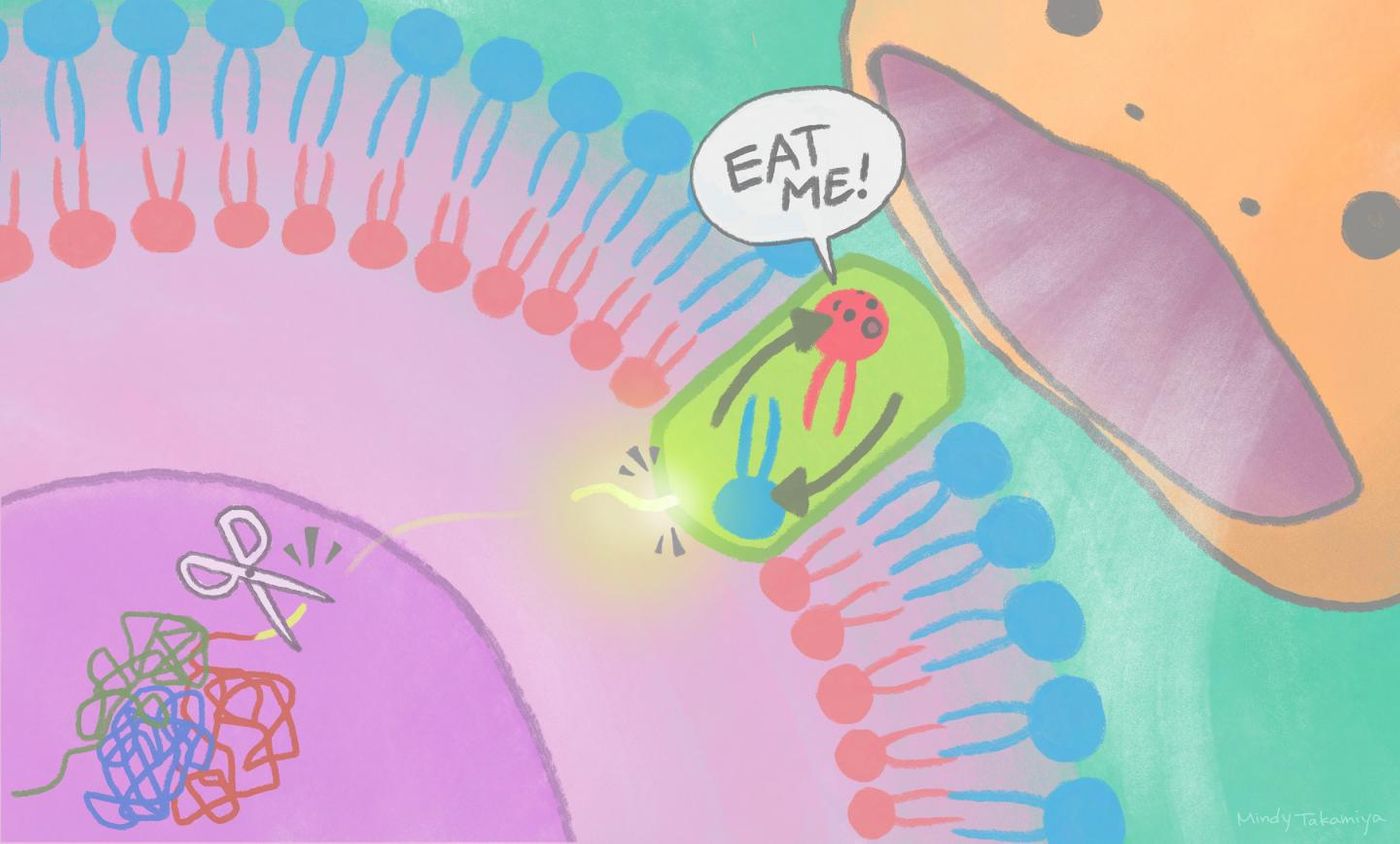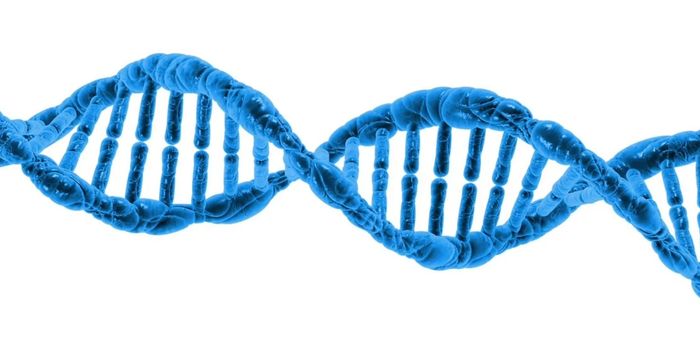The Mark of a Dead Cell In Need of Cleanup: An 'Eat Me' Sign
Researchers are learning more about the body's maintenance processes, which include eliminating cells that are damaged or unneeded. One way this happens is through phagocytes, which are cells that can consume other cells. Some phagocytes are immune cells like monocytes, macrophages, or neutrophils and are so efficient at it they are called professionals. A few other cell types are capable of the process, but it's not their primary role, like endothelial cells; they are called non-professional phagocytes.
Scientists have now learned more about the signals that a cell sends out to trigger phagocytosis. Reporting in Molecular Cell, they've found that in the cell needing elimination, a portion of protein is released from the nucleus into the cytoplasm, where it goes on to activate another protein in the plasma membrane that then displays a lipid on the surface of the cell. That flipped lipid shows phagocytes that it has to be eliminated.
"Every day, ten billion cells die and are engulfed by blood cells called phagocytes. If this didn't happen, dead cells would burst, triggering an auto-immune reaction," explained the study leader Jun Suzuki, a biochemist at the Institute for Integrated Cell-Material Sciences (iCeMS) at Kyoto University. "It is important to understand how dead cells are eliminated as part of our body's maintenance."
It's already known that cells can display a signal on their surface that says they should be eaten; this process involves flipping lipids between the inner and outer portions of the cell's membrane. Proteins called scramblases help flip or translocate the lipids. Suzuki's team has previously found some of these scramblases, but the mechanisms that trigger them have not been clear.
In this study, the researchers used various approaches to assess a scramblase called Xkr4.
"We found that a nuclear protein fragment activates Xkr4 to display the 'eat me' signal to phagocytes," said the first study author, iCeMS cell biologist Masahiro Maruoka.
When a cell is damaged beyond repair and it's dying, signals are sent to the nucleus that cause a protein called XRCC4 to get cut by an enzyme. Once cut, a piece of XRCC4 exits the nucleus and activates Xkr4. Both things have to happen to lead to the transfer of cell surface lipids through this pathway, and the 'eat me' sign to be displayed to phagocytes.
There are more scramblases other than Xkr4, and some of them are activated more quickly during cell death. The researchers want to know more about when and why the Xkr4 pathway is used. It's known to be expressed at high levels in the brain, where it may play an important role.
"We are now studying the elimination of unwanted cells or compartments in the brain to understand this process further," noted Maruoka.
Sources: AAAS/Eurekalert! via Kyoto University, Molecular Cell









